I keep coming back to obscure video game releases of the 2000s because there truly was an unhinged “let’s try this and see how it goes” energy going on, especially with games based on big IPs. In an era of gaming that wasn’t market-researched to hell and back and during which development cycles still made sense, notable publishers such as EA took gambles with pitches that seemed exciting enough and at least guaranteed mining famous properties for quick money.
This philosophy led to a “gold rush” of AA releases that often was more exciting and memorable than objectively better-made games. One sizable IP that enjoyed a big boom in the early 2000s was Aliens vs. Predator, a Fox-captained crossover that had already made some noise in the gaming sphere – check out Capcom’s amazing arcade brawler – and took off thanks to Dark Horse’s fantastic comic books. The funny thing about the surge of AvP games in those years is that Fox’s first attempt at cracking the crossover on the big screen wouldn’t arrive until 2004, so this wasn’t some kind of huge transmedia push. Things simply lined up that way.
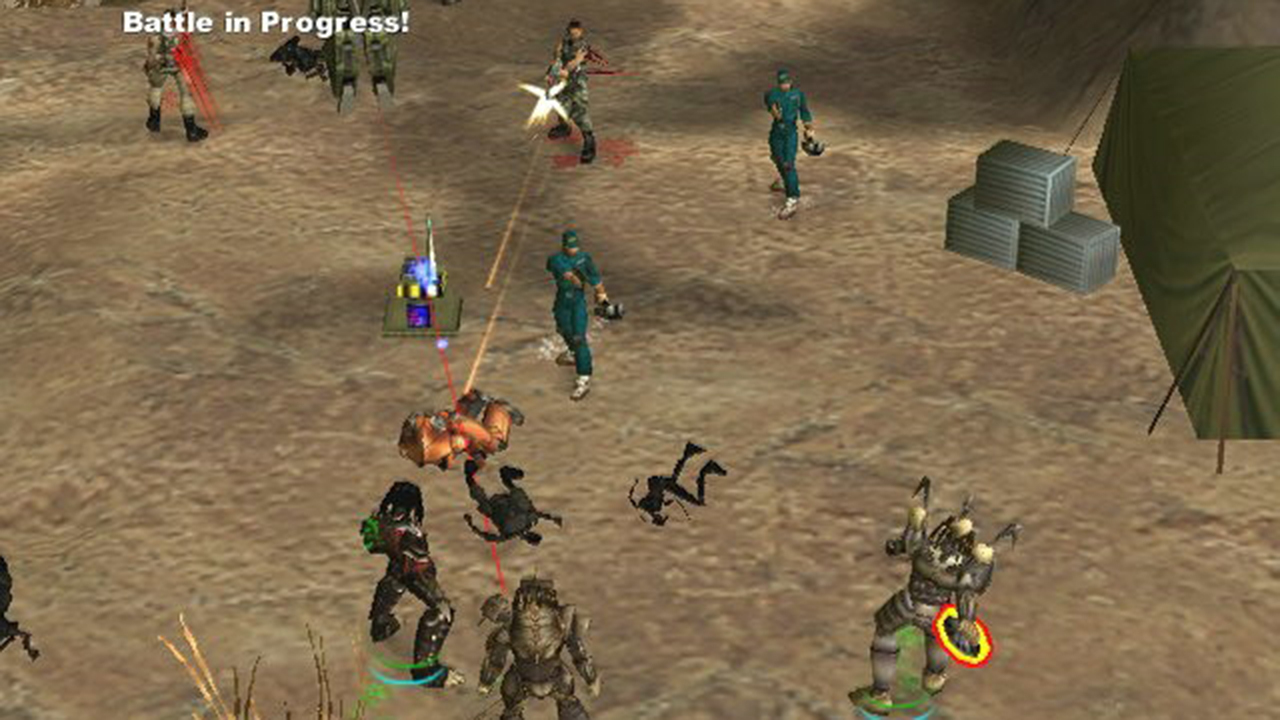
After making an acid splash on PC with two amazing first-person shooters – Rebellion’s Aliens Versus Predator (1999) and Monolith’s Aliens Versus Predator 2 (2001) – Fox Interactive turned to EA and offbeat developer Zono to handle Aliens Versus Predator: Extinction, an RTS (what) only for consoles (double what). Online information on the matter is scarce, so I’m gonna assume the devs reached out to Fox instead of the other way around, as this was a pretty big departure for both Alien and Predator in the realm of video games. Plus, some of Zono’s earlier work already suggested a genuine love for asymmetrical strategy titles.
On paper, it all sounded like a disaster waiting to happen, yet the final product is… extremely okay. Note the use of the word “okay.” I’m fond of oddball games such as AvP: Extinction, but I won’t try to sell the idea that it’s some kind of misunderstood masterpiece. It’s often broken – the pathfinding blows and the AI likes to spazz out – and clearly undercooked, but the fun it consistently delivers and its overall game design are unique. Also, it turns 20 this year, so what better time to give it some love?
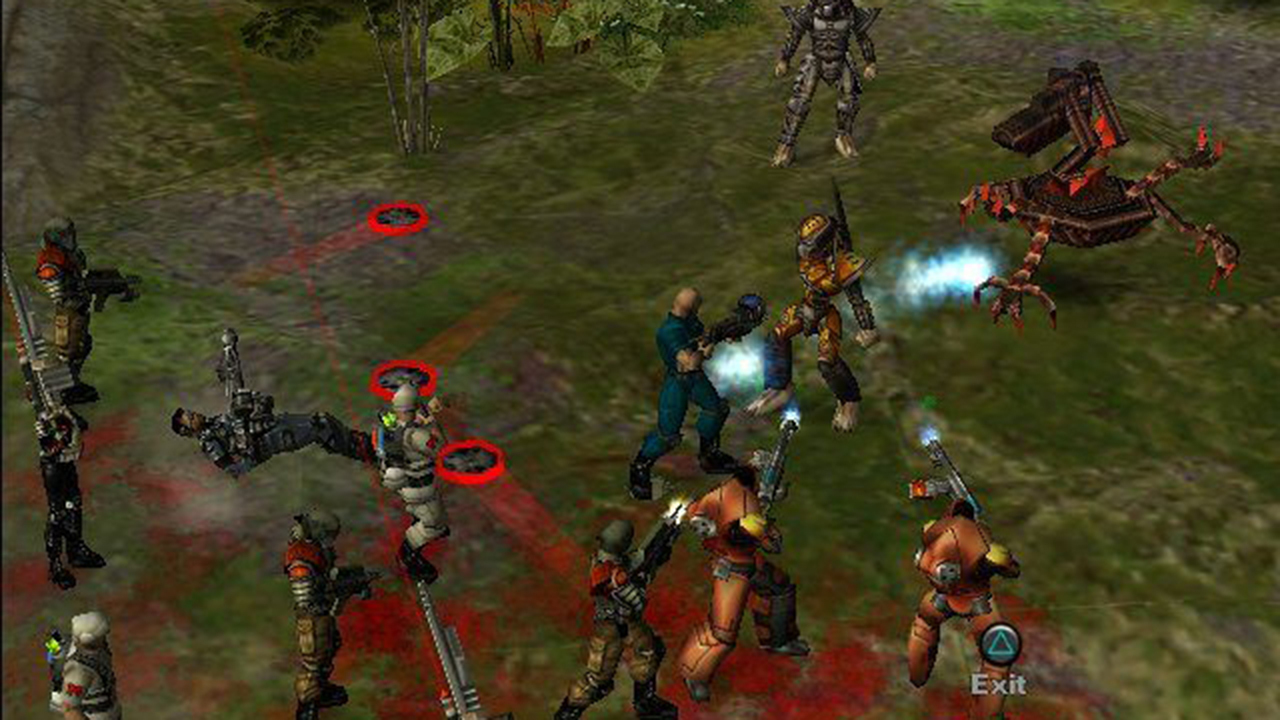
The first question that comes to mind is — how do you even begin to turn Aliens vs. Predator into an RTS game? StarCraft might offer some answers as it’s easy to establish parallels between each universe’s three main species. But the reality was much simpler; Aliens Versus Predator: Extinction isn’t a complex game and isn’t too concerned with unit management or base-building. It was built with the control limitations of gamepads (when it came to strategy titles) taken into account. Mind you, Age of Empires II on PlayStation 2 was already a thing, but this game landed closer to something along the lines of the Commandos saga.
The package offers three different campaigns that run in parallel story-wise (with loading screens doing all the work), each seven missions long, with clear main objectives and often tough time-limited optional tasks. Get the full completion medals to unlock cheat codes and go wild. What about skirmishes or multiplayer? There isn’t any for some weird reason! As I said before, AvP: Extinction feels like something really special that needed more time in the oven. You can read plenty about each unit the game has to offer though.
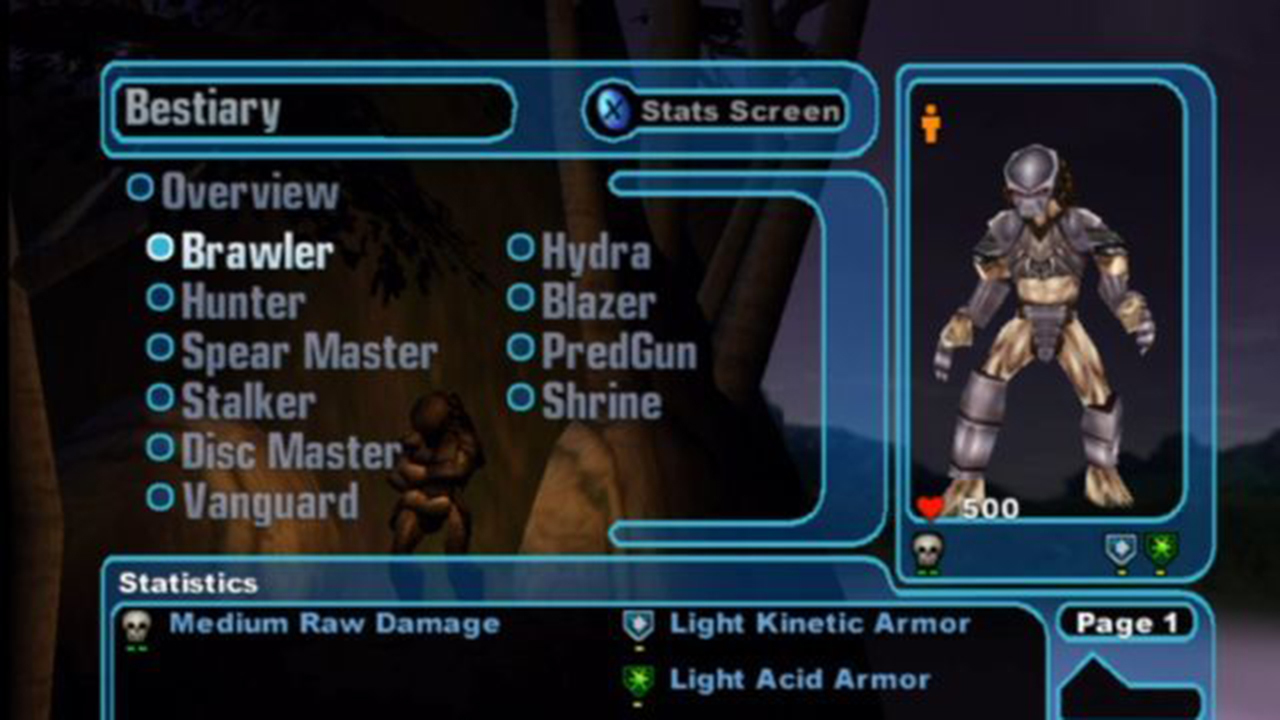
Unsurprisingly, the story / excuse holding this top-down conflict together is yet another variation of Weyland-Yutani fucking around and finding out, this time on LV-742. In the middle of it all on cleanup are the poor Colonial Marines, aka the Alien universe’s cannon fodder, but like always, they look sick as shit while burning and blowing up xenomorphs and predators.
Their in-game economy is pretty busted, too: Each map has a number of atmospheric processors that can be fixed for minutes-long bursts of credits that allow them to buy (permanent) unit upgrades and recruit new soldiers, synthetics, and even mechs. In many instances, you can just play defensive and farm each processor before moving into more dangerous areas, allowing you to play the objective with a fully beefed up squad of marines that make the game engine tank pretty hard. Perhaps their biggest weakness is how much they depend on having a CommTech marine alive, as it seems that other humans don’t possess the intellect necessary to call in new units. Lose all your “phone guys” and you’re screwed big time.
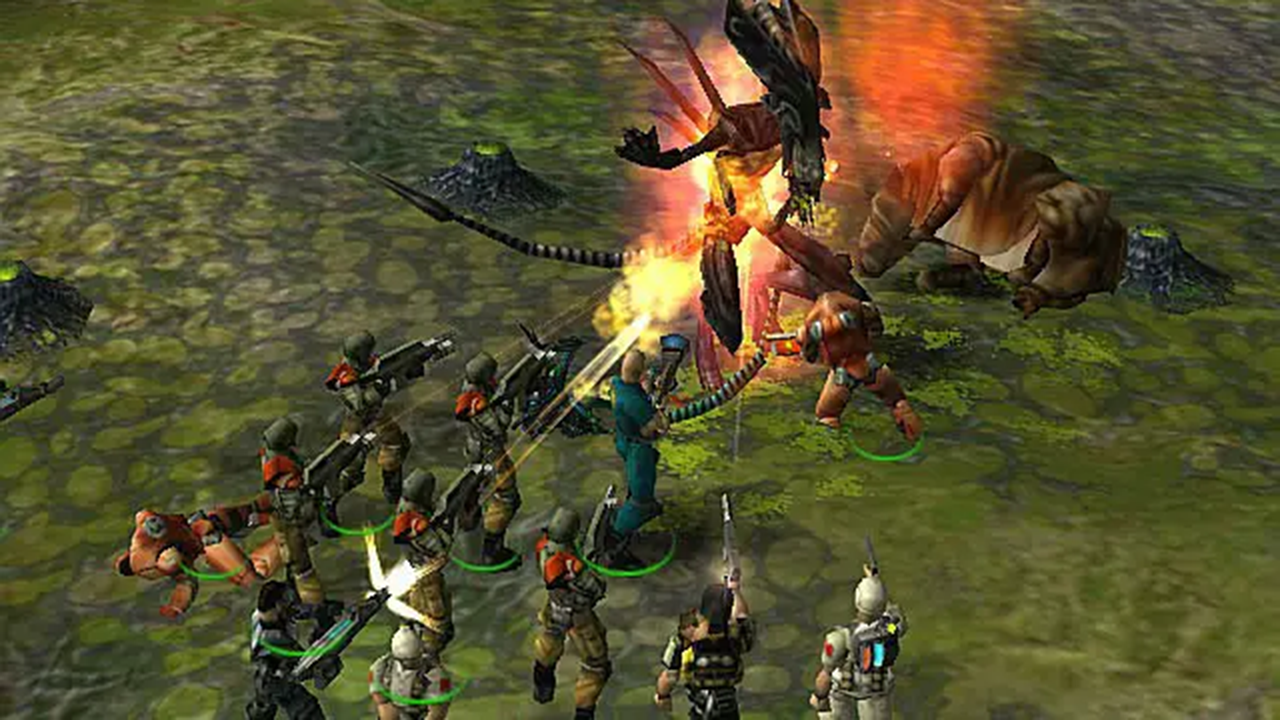
If the human campaign is mostly a smooth ride for smart players, the predators’ side of the war is a difficulty roller coaster, with the earlier missions quickly involving getting swarmed from every direction. Predators are mostly durable and resourceful hunters, including generous cloaking abilities and almost instant unit recruitment, but it’s not until the chonky bois (military-tier predators) arrive that their campaign becomes bearable. In fact, it becomes kind of a joke if you wait up and prioritize upgrades.
The funniest thing about predators in Aliens Versus Predator: Extinction is how their economy is skull-based; kills earn them “credits,” but it’s all about collecting trophies from corpses and cashing them in. The way to total domination of a map is… removing heads. Later comes what I like to call the lasering, which involves heavy-duty predators going full Protoss and making enemies as crispy as possible. On top of that, they also have the coolest loading screen images (see below).
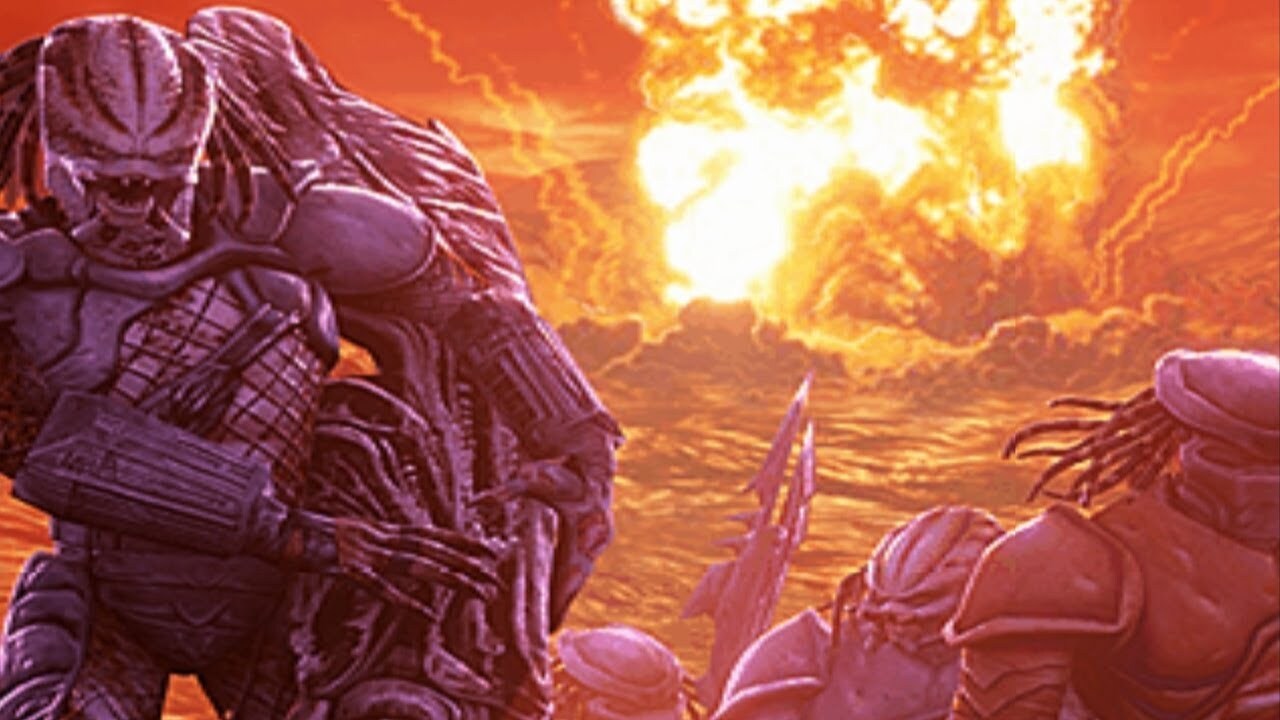
Against all expectations, aliens are the most micromanagement-heavy species in the game. Yes, driving a murderous swarm of acid-blooded space monsters around is good, mindless fun, but their play style is slower and more thoughtful. They can “build” nodes that expand the hive, heal up units, and ramp up point generation. Moreover, a queen needs to lay eggs that produce facehuggers that, in turn, produce the actual xenomorphs. If you’re a fan, you know the drill. As a result, protecting the hive and the queen is as important as expanding their dominion.
Facehuggers are kind of weak too, so bringing comatose enemies to the eggs works better than the other way around. All these extra steps to grow an army make the aliens seem weak at first, but of course, they balance it all out with rapid point generation, fast units, and tons of acid blood as final farewell gifts. There’s also a whole evolution tree that makes them quite versatile, but that alone could fill an entire article — so I’ll just tease there are huge tanky aliens with blades for hands (big classic Kenner toys vibes).
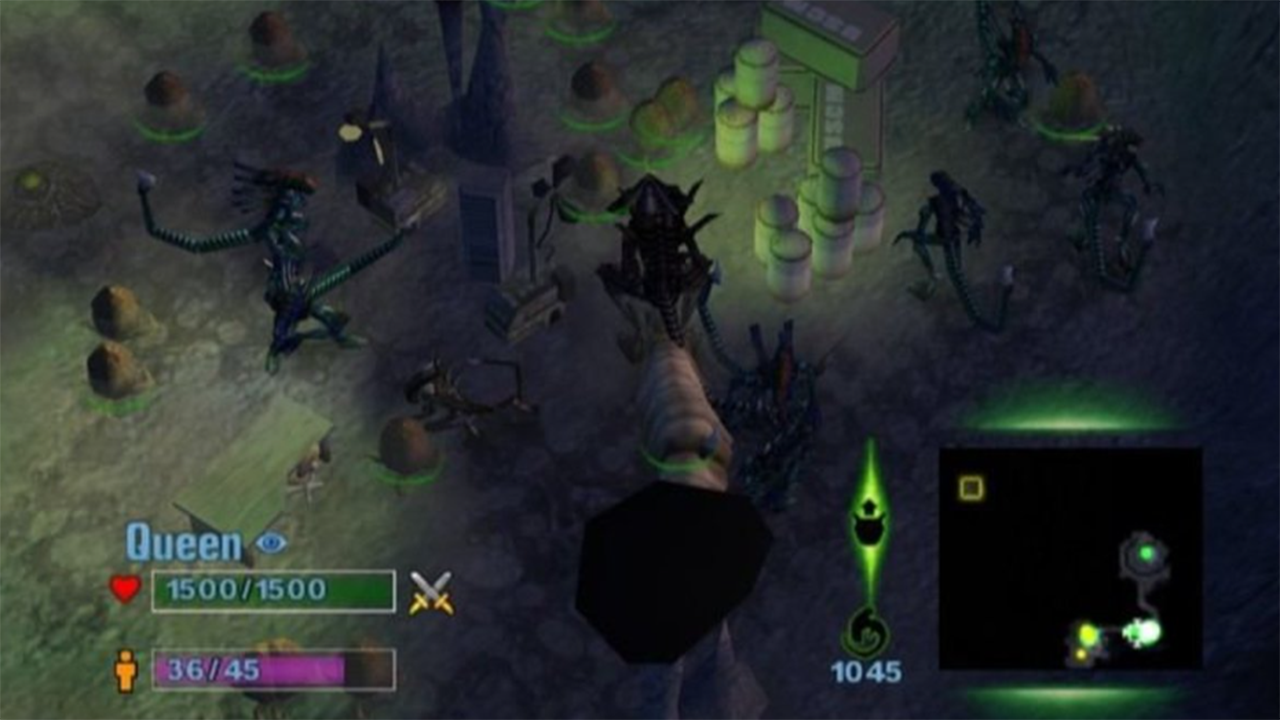
AvP: Extinction also looked (and still looks) fine for a PS2 / Xbox strategy game, with the devs choosing to sacrifice map detail in exchange for pretty cool unit models that look Dawn of War levels of gorgeous when upscaled via emulation. Likewise, Rich Ragsdale’s original soundtrack is as quirky as the game and draws plenty of inspiration from both film franchises. No surprise here though, as he had already delivered big time with his work for the aforementioned FPS Aliens vs. Predator titles.
All in all, Aliens Versus Predator: Extinction is a perfect showcase of the chaotic spirit that impregnated a sizable amount of mid-sized games in the PS2 / Xbox / GameCube era. Both publishers and IP holders were willing to take more risks as neither development costs nor expectations had ballooned up. Alien and Predator games are still happening after the Disney-Fox takeover, but despite the current AA approach to both properties, it appears that these horror icons won’t be starring in anything but well-tested genres anytime soon.

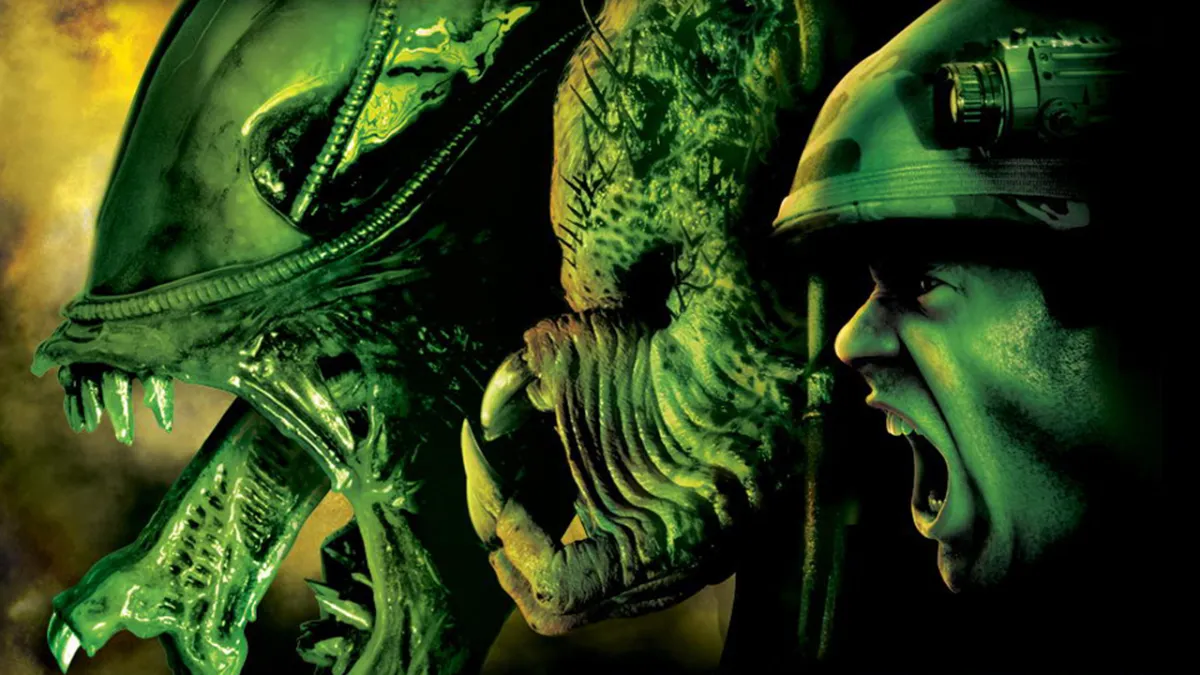




Published: Mar 14, 2023 05:56 pm